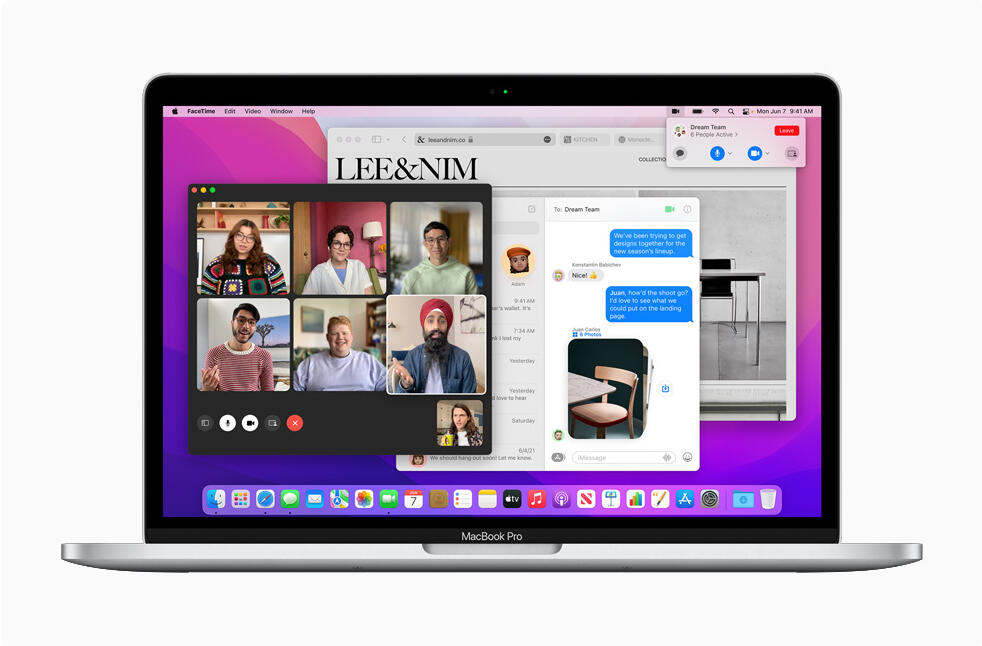Base model M1-powered MacBook Airs and Pros appear strikingly similar, but only on first glance. Three key differences justify the M1 MacBook Pro's $300 up-charge.

With the M1 MacBook Pro, Apple's built an incredibly fast-performing machine that still delivers extended battery life.
Image: Apple
The specifications lists for Apple's new base model M1-powered MacBook Airs and MacBook Pros are almost identical. Both models offer 13.3" Retina 2,560-by-1,600-pixel displays with wide (P3) True Tone color, the Apple 8-core M1 chip with four performance and efficiency cores and a 16-core Neural Engine, up to 16GB memory and 2TB storage, 720p FaceTime HD cameras, 802.11ax Wi-Fi 6, backlit keyboards, an audio jack and two Thunderbolt (USB 4) ports, along with a Touch ID sensor.
SEE: Change control policy (TechRepublic Premium)
So, how are these two Macs different, other than the $1,299 MacBook Pro being negligibly heavier at 3 pounds versus the $999 Air's 2.8-pound heft? Three key distinctions, all particularly compelling for business users typically dependent on higher performance and capabilities, may well justify the M1-powered MacBook Pro's additional $300 in cost.
1. Better performance
Apple touts the MacBook Air as having "a silent, fanless design." As a result, the thin-and-light computer is quiet and, despite its M1 power, only "sips" battery energy.
Not immediately apparent, though, is the fact the M1 chip supplied in the MacBook Air doesn't appear to perform at its full capacity compared with the same Apple Silicon performance in the MacBook Pro counterpart. Widespread rumors and opinions suggest Apple purposefully throttles the Air's M1 capacity to prevent thermal overheating. While total performance capacity is apparently only a minor difference and likely to only be noticed by demanding professionals, business users seeking to maximize the M1 chip's performance—a common need when editing images, rendering video, processing large amounts of data and performing other common data-intensive chores—or who constantly attend online video meetings—may wish to opt for the MacBook Pro.
SEE: Why the PS5 is the must-have gaming console of the year and everything you need to know about it (free PDF) (TechRepublic)
For one potential clue the Air's M1 chip may be throttled, just consider the two models' different power supplies. The Pro is equipped with a much beefier 61-watt power source, versus just a 30-watt adapter for the Air. The additional energy is presumably needed for a reason.
2. Longer battery life
Those professionals consistently working from the road, while traveling or when away from a desk or cubicle providing a dedicated power source, will find the MacBook Air a little lighter and designed for mobile use. I suspect that's why the Air's display delivers 400 nits of brightness, as higher (brighter) displays require more energy and shorten battery life.
SEE: Apple supplier Quanta hit with $50 million ransomware attack from REvil (TechRepublic)
The Air's battery life, however, is shorter. While the M1 Air's 49.9-watt lithium-polymer battery is estimated by Apple to provide up to 15 hours of wireless web activity, the MacBook Pro benefits from a bigger power source. The Pro's 58.2-watt battery extends wireless web working time up to an estimated 17 hours. Unless professionals are editing video on the road or performing other intensive tasks while disconnected from power, a combination few recommend, the Pro's additional battery life could well come in handy when squeezing off just one or two more critical emails when waiting to board a plane, for example.
3. Brighter display
With its 500-nit display, the M1 MacBook Pro provides users the option of rendering screen displays that are almost 25% brighter than the Air. While the M1 Air's display produces gorgeous images with crisp clarity and in True Tone color, when producing final art works, images, photos and video, the additional brightness assists professionals in better viewing and anticipating the final version of their works. And when working indoors with direct sunlight or bright lights, the additional illumination will prove handy for everyone from video production staff to graphics professionals.
Additional considerations
The M1 MacBook Pro offers other upgrades over its MacBook Air sibling, as well. The Pro sports the Touch Bar, which provides contextual access to commonly used features, including brightening or darkening the display, adjusting volume and configuring backlight intensity. The Pro model also boasts stereo speakers with high dynamic range versus just wide stereo sound for the Air. The Pro model's studio-quality microphones' high signal-to-noise ratio filtering will prove yet another helpful feature and differentiating factor versus the Air when attending video calls, too.

Apple Weekly Newsletter
Whether you want iPhone and Mac tips or the latest enterprise-specific Apple news, we've got you covered. Delivered Tuesdays
Sign up todayAlso see
- Apple M1 MacBook Pro is the speed king of my work day, and Intel should be worried (TechRepublic)
- Apple Silicon M1 Mac buying guide: 2021 iMac vs. 2020 MacBook Air vs. MacBook Pro vs. Mac mini (TechRepublic)
- Raspberry Pi: A cheat sheet (TechRepublic)
- 10 MacOS tune-up tricks for your Mac (free PDF) (TechRepublic)
- Scheduled Systems Outage Checklist (TechRepublic Premium)
- MacBook Air (Late 2020) review: M1 chip gives Apple's veteran ultraportable a shot in the arm (ZDNet)
- Raspberry Pi: More must-read coverage (TechRepublic on Flipboard)







 English (US) ·
English (US) ·